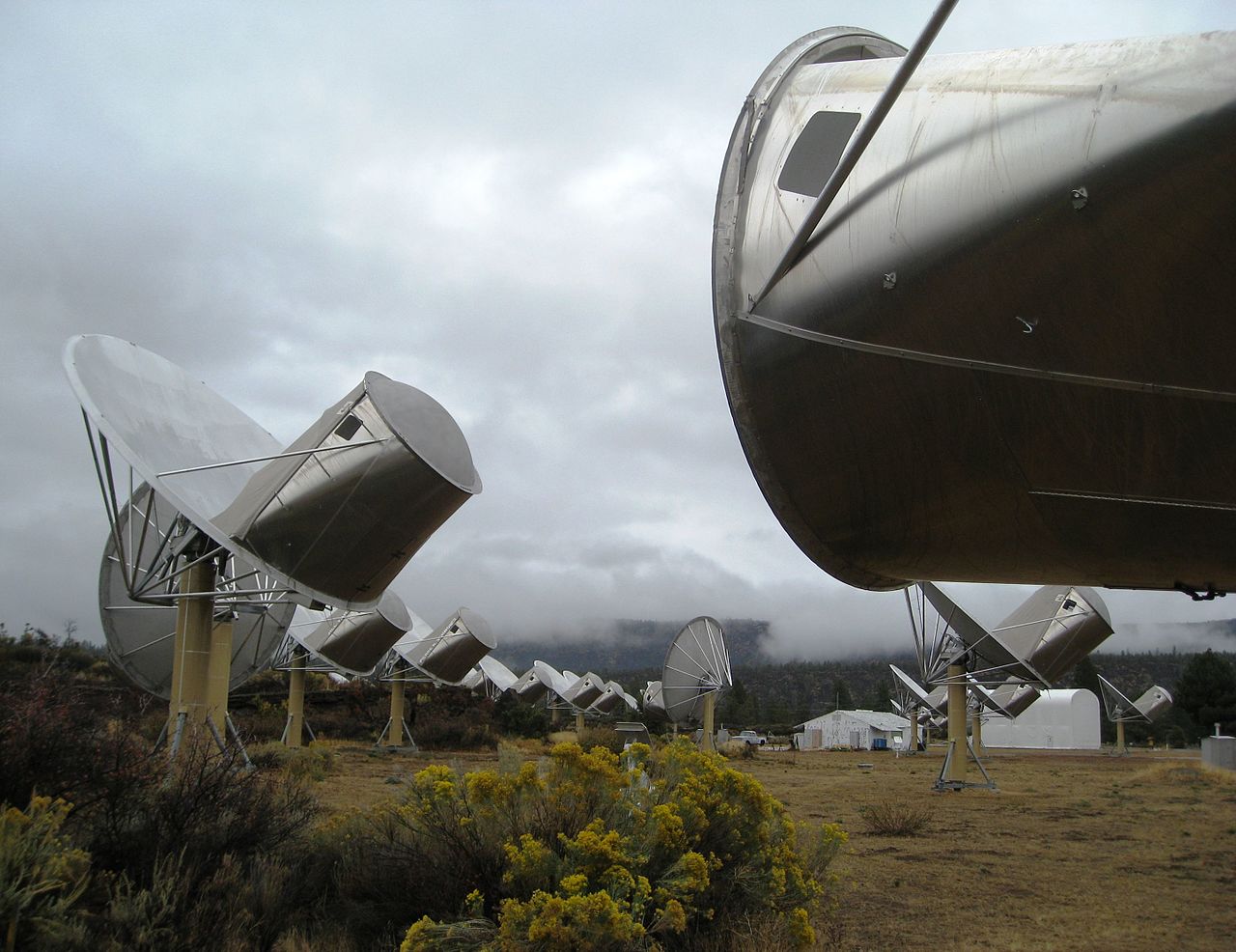Astronomers Are ‘Racing Against Time’ as Humanity Clogs the Air With Radio Signals
Credit to Author: Jacob Dubé| Date: Tue, 17 Oct 2017 13:00:00 +0000
In a remote valley in the British Columbia interior, a massive telescope called the Canadian Hydrogen Intensity Mapping Experiment (CHIME) is scouring the skies for traces of dark energy, a mysterious force that drives the expansion of the universe but has never been directly detected. As if hunting for dark energy isn’t challenging enough, radio astronomers fear it might not be long before proliferating tech like smartphones and space satellites make these kinds of studies—and even the ongoing search for aliens—impossible, due to radio interference.
According to Mark Halpern, principal investigator at CHIME and astronomy professor at the University of British Columbia, the growing number of communications satellites in space as well as technologies on the ground that emit radio waves are interfering with CHIME’s data-collecting, and could potentially do more damage in the future. If radio astronomers aren’t able to do their research, it could prevent us from making future discoveries about our universe.
“I feel like we’re racing against time to get CHIME done while we still can,” Halpern said.
*
Radio frequencies are everywhere. They’re used to transport information for radio broadcasts, television, and your cell phone. As anybody who’s ever awkwardly spoken to someone on a walkie-talkie that accidentally hooked up to the wrong frequency knows, it’s really easy to interrupt those channels when one signal bleeds into the other.
It might not be such a big deal when your television gets a little bit of static. But interference can cause radio astronomers to lose their research data. Radio astronomy has led to the discovery of quasars, the imaging of asteroids, and showed us the cosmic microwave background, which is leftover radiation from the Big Bang. Just this week, scientists discovered a new source of gravitational wave: the violent merger of two neutron stars 130 million light years away. Astronomers will study the resulting radio waves to learn more about the energy of a neutron star collision, and how much mass is ejected.

The International Telecommunications Union (ITU), the United Nations’ agency for policing frequencies, provides recommendations for how radio frequencies should be distributed. The agency sets aside a band of radio waves specifically for radio astronomy projects.
But the nature of CHIME’s experiment makes it so that the telescope has to access a broader range of frequencies outside of that spectrum to map out more parts of the universe at once.
Halpern said the huge amount of frequencies they were accessing wasn’t a problem when they initially started the project. They’re located in a radio safe zone in a valley near Penticton, BC, where there is government-approved signage in the area telling drivers to turn off all electronic devices. But he said that around three years ago, a series of television stations started opening up near Penticton, causing bleeds into their signal.
Read More: An Earth-Sized Telescope Is About to ‘See’ a Black Hole For the First Time
Although the valley protects CHIME against local radio waves, the television satellites locked in orbit still cause interference. And since the scientists don’t own the frequencies they use—and won’t likely ever afford to buy a spectrum needed to perform their experiments, as they sell for billions—these scientists can’t do much about it. Halpern expects the rest of their radio waves will be auctioned off for television eventually.
“It’s completely not in the cards that CHIME could use any part of its budget to buy its own frequency,” Halpern said. In terms of funding and priority, he said, communications services dwarf the resources of radio astronomers.
*
Satellites aren’t the only thing bleeding into other frequencies. According to Ken Tapping, an astronomer at the National Research Council’s Dominion Radio Astrophysical Observatory in Penticton, where CHIME is also based, everyday tech like smartphones and those new wireless car keys emit accidental radio waves, called “unwanted emissions,” that interfere with other frequencies.
“These things splatter across all paths of the radio spectrum. They’re produced inconsequentially,” Tapping told me in a phone interview.
The ITU recommends that radio astronomy studies expect a maximum of five percent of their total data lost due to interference. It might not seem like a lot, but for experiments that depend on tracking short radio wave bursts, it could mean losing information that’s crucial to the experiment. Tapping said that in the future, even if everybody sticks to their allotted radio emissions, the amount of interference will increase due to the sheer amount of technology.
“They’re dirt cheap, they’re imported from abroad, and they’re being deployed all over the place in a currently uncontrolled fashion,” Tapping said, referring to the proliferation of cheap electronic devices. “If these reach a certain density of use, then radio astronomy could become rather difficult.”

Tapping hopes that it the ITU will be able to cap its losses at five percent. If a radio astronomy study is losing more of their research than that, he said, it might cause problems with funding, since funding sources could feel as though they’re not getting an adequate return on their investment.
Growing radio interference will also make it harder for scientists to receive signals from extraterrestrial life. At the Search for Extraterrestrial Life Institute (SETI) in Mountain View, California, radio astronomers are constantly looking for any sort of message that didn’t come from humans. But, according to SETI senior astronomer Seth Shostak, the signals they look for are the same ones humans produce every day.
“The question is ‘Is this ET on the line, or is it another telecommunications satellite passing overhead?'” Shostak told me. When SETI detect a promising radio signal, their astronomers check if it moves in correlation with the rotation of the Earth, and make sure that their other receivers don’t detect it, since that would indicate it’s either a human-made satellite in orbit or a ground-based radio system.
The clear solution for radio astronomers is to move their instruments to remote areas with little human presence. This can occasionally result in rules that are somewhat dystopian: China banned any electronic devices and created a resident-free zone around its massive new radio telescope to ensure there would be no interference, relocating 9,000 residents in the process.

Halpern said his team did field measurements in remote places like the Sahara Desert when trying to figure out where to put CHIME. But remote locations come with their own challenges, like ensuring safety and access for scientists, and the extra cost of building in unpopulated areas.
Another option, Shostak suggests, is to move radio astronomy projects to the backside of the Moon, which is shielded from any frequencies from Earth. The obvious problem, he said, is that these projects don’t have the astronomical amount of funding necessary for a lunar mission, so they’re Earthbound for now.
To prevent the death of radio astronomy, Tapping said that astronomers have to work more closely with communications companies for solutions. The introduction of more low-power transmitters for smartphones and other technologies could reduce the amount of unwanted emissions, and increase the battery life of those products, too. But Tapping pointed out that would affect these companies’ bottom line, so the risk of increased interference lives on.
“There’s a Darwinian struggle going on,” Tapping said. “But I’ll be honest, there always has been.”
Get six of our favorite Motherboard stories every day by signing up for our newsletter.